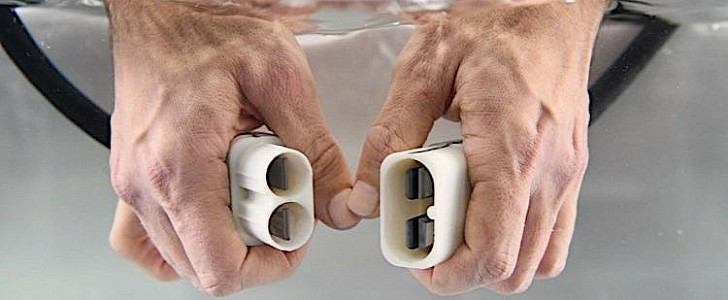We are all taught from a very young age that electricity and water do not mix. Well, they actually do, but the results are disastrous. Yet that hasn’t stopped people from laying wires all over the ocean’s floors or coming up with some piece of underwater hardware that needs electricity to run.
There are presently several technologies that allow for the existence and safe operation of underwater connectors. The secret in making them all successful is keeping water and all the nasty effects that occur when they come in contact with it away.
Mostly known for its involvement in space exploration efforts and defense projects, American company Northrop Grumman has a special type of underwater connectors in its portfolio. They’re called NiobiCon (that’s kind of short for niobium-based connectors) and are described as being capable of allowing power transfer without making use of the seals, oil, or moving parts most of the existing wet-mate connections presently have.
The secret behind this technology is the niobium. When used in these power connectors, this metal, once exposed to water, reacts in milliseconds and creates a protective film that acts as an insulator. That means the electrical contacts can be fully exposed to water, which would not affect them one bit.
One might wonder what happens to the protective film once the connector mates and it is no longer needed. According to Northrop Grumman, the film scrapes off when the pairing is performed, clearing the way for electricity to flow. And even if it didn’t, the film is so thin some might even wonder if it really exists: 150 nanometers. For reference, the thickness of a human hair is 70,000 nanometers.
The technology was presented by Northrop Grumman earlier this year, and it already found interested parties. The company announced this week it partnered with the Monterey Bay Aquarium Research Institute (MBARI) to include NiobiCon in deep-ocean research technology, mostly underwater vehicles.
Mostly known for its involvement in space exploration efforts and defense projects, American company Northrop Grumman has a special type of underwater connectors in its portfolio. They’re called NiobiCon (that’s kind of short for niobium-based connectors) and are described as being capable of allowing power transfer without making use of the seals, oil, or moving parts most of the existing wet-mate connections presently have.
The secret behind this technology is the niobium. When used in these power connectors, this metal, once exposed to water, reacts in milliseconds and creates a protective film that acts as an insulator. That means the electrical contacts can be fully exposed to water, which would not affect them one bit.
One might wonder what happens to the protective film once the connector mates and it is no longer needed. According to Northrop Grumman, the film scrapes off when the pairing is performed, clearing the way for electricity to flow. And even if it didn’t, the film is so thin some might even wonder if it really exists: 150 nanometers. For reference, the thickness of a human hair is 70,000 nanometers.
The technology was presented by Northrop Grumman earlier this year, and it already found interested parties. The company announced this week it partnered with the Monterey Bay Aquarium Research Institute (MBARI) to include NiobiCon in deep-ocean research technology, mostly underwater vehicles.


